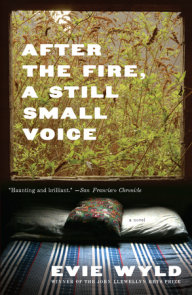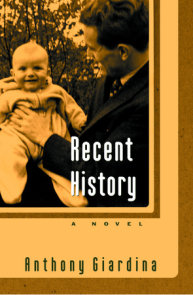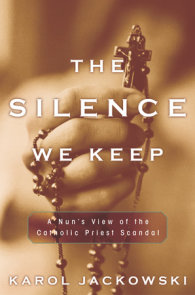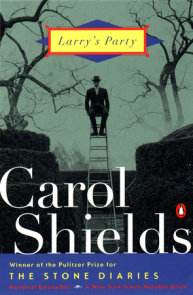READERS GUIDE
Questions and Topics for Discussion
INTRODUCTION
Like the rest of the world, Alexander “Sasha” Karnokovitch is devastated when his mother Rachela, a renowned mathematician, dies of cancer. After Sasha promises Rachela on her deathbed that he and his estranged father will stay connected, the two men decide on a dignified shiva—seven days of private mourning in their Jewish household—to honor her memory. Yet the international mathematics community, arriving at her home in Madison, Wisconsin, for the funeral, has different ideas.
Rumor has it that Rachela has not only solved the million-dollar Navier-Stokes Millennium Prize problem, but she’s also taken the highly sought-after information with her to the grave for reasons no one can understand. Outsiders come looking for answers, including an unhinged Rachela fanatic and, with Sasha’s reluctant permission, a subset of (ostensibly more sane) visiting mourners. Crashing the shiva and setting up camp in Rachela’s house, their mission is simple: to either find the missing proof or do whatever it takes to solve it themselves. Holding séances, ripping up floorboards, skiing across Wisconsin’s frigid countryside, and translating Rachela’s forty-year-old parrot Pascha’s Polish squawks, the team of brilliant social misfits will stop at nothing in their quest.
Meanwhile, Sasha must confront his own relationship with his genius but at times difficult mother, reconciling his personal experiences with the image of her the public sees. As he entrenches himself once again with his small and splintering family, he must also revisit the decisions that have led him to a lonely life in middle age. Though he’s long ago tried to move on from a painful divorce and a daughter he’s never met, he wonders how things might have been different.
Alternating Sasha’s retelling of these events with chapters from his mother’s memoir of survival through the Holocaust and Soviet exile, The Mathematician’s Shiva tells the cleverly layered and emotionally complex story of an immigrant family that has endured enormous loss and hardship in order to build a new life in America—a life that’s not altogether free of absurdity.
With hilarious detail, geophysicist Stuart Rojstaczer sends up the insular and sometimes ridiculous world of academia with its quirky characters, petty rivalries, and powerful triumphs. At the same time, he crafts an insightful, empathetic saga of the modern immigrant family trying to hold on to its identity in the face of acculturation—a bittersweet concoction perfect for fans of Gary Shteyngart, Jonathan Safran Foer, and Jonathan Tropper.
ABOUT STUART ROJSTACZER
Stuart Rojstaczer was born in Milwaukee, Wisconsin. For many years, he was a professor of geophysics at Duke University. He has written for the New York Times and the Washington Post, and his scientific research has been published in many journals, including Science and Nature. He lives with his wife in Northern California. This is his first published novel.
A CONVERSATION WITH STUART ROJSTACZER
1. This is, quite obviously, a story about mathematicians. What were some of the challenges in dramatizing the world of academia? How did you approach writing about highly advanced mathematics for a lay audience?
There were two big challenges for me. First, academics like these tend to live in their heads and aren’t very talkative. If I just put a random group of fictional mathematicians in a room, things would tend to be very quiet and there would be not a whole lot to write about. That’s where Sasha’s family helps matters, in particular Uncle Shlomo, Cousin Bruce, and Anna. They provide spark. Also, I do have one naturally gregarious, people-loving mathematician, Yakov Epshtein, and he helps move the conversations along. The second challenge, obviously, was describing the math. But having spent fifteen years teaching math-based science to college students, some with math-phobia, I’m pretty well practiced in talking about mathematics in ways a lay audience can understand and appreciate.
2. The events of the novel take place ten years in the past. Why did you decide to tell the story from that vantage point?
There are multiple plots involving many characters in this novel and the timing has to be just right for all those plots to work. The year 2001 is about when the “contemporary” action has to take place. Also, the main narrator, Sasha, needed to have time to process all that happened to him during the shiva. It’s a life-changing event for Sasha, and it seemed to work best that he tell this story from the perspective of someone who understands well and is appreciative of his good fortune in life. That comes with age, I think.
3. What inspired the character of Rachela, and what intrigues you about her?
My mother’s name was . . . Rachela. She used to love it when I was fully grown and would call out her name with a Polish Yiddish accent. She’d break into an instant smile whenever I said Roo-che-lah. If she were still around and could read this novel, she would claim, I’m certain, that Rachela Karnokovitch is 100 percent her with the exception that Karnokovitch has a Ph.D. and is a math genius. I can well imagine that I would counter that Rachela Karnokovitch is 60 percent my mom. What I loved about my mom and what I love about Rachela Karnokovitch is that they both were able to succeed in fields dominated by men (my mother worked in construction), didn’t have time for weakness, were loyal to their families, and had a natural inclination and desire to nurture and help the weak. Rachela Karnokovitch is the strongest personality in a novel full of strong-willed people. I can’t help but be intrigued by her. She is the queen bee.
4. Rachela has clearly endured great suffering so that her son could have a better life, and this backstory informs much of Sasha’s perception of the world. In your view, how does her parental pragmatism help or hurt him as an adult?
Sasha is in a state of stunted maturation. He’s certainly successful in his career, but he feels the need to be a big fish in a small pond. It would be easy to place the blame for his absence of emotional maturity on the overpowering presence of his mother, and certainly I’ve seen grown men and women cast that kind of blame on their mothers or fathers. Sasha doesn’t go there, though, and that’s what I find admirable about him. When loved ones try to give Sasha that excuse for his deficiencies, he bristles. He’s immature, but not so immature that he blames his elders for his less-than-savory behavior. What he does know, as does everyone who loves Rachela, is that he never can be as dynamic and smart as his mother. Although accomplished, he’s a mere mortal in comparison. That awareness comes with both benefits and liabilities.
5. You’ve called this novel a “bildungsroman of middle age.” Can you explain what this term means to you?
When do people “grow up”? When do they become responsible for their actions and see how precariously and importantly they are connected to everyone around them? We expect people to obtain this kind of understanding of their place in the world when they are in their twenties, but I’ve seen ten-year-olds who already possess it and fifty-year-olds who don’t. I wanted to examine someone who, while successful in his career, is quite immature. Is it possible for someone like that to change even in middle age? I’ve seen it happen. People can grow, learn more, become happier, and be a positive force in the world even though their early years might suggest that such a transformation is unlikely. Late maturation is a key theme in this novel.
6. There’s a passage in which Sasha compares the experience of working through math problems to diving into a lake and feeling around in the dark. What kinds of parallels can you draw between the processes of solving an equation and penning a novel?
Working on equations for me involves a mix of inspiration and daily professional work. You get an idea about how to solve a problem. That’s the spark. Then you have to do the actual work of solving the problem, which requires hunkering down and getting it done. Such work requires small progress day by day with little bits of inspiration along the way. Novel writing for me works, perhaps not surprisingly, the same way. I get an idea. I map it out much like I would map out a geophysics problem. Then every day I write seven hundred to twelve hundred words and solve the “problem,” which in the case of novel writing is the story of the people I’ve created.
7. The academics that converge on the Madison house for the shiva are a motley bunch, and it seems as though you had fun conjuring up the group scenes. How much did you draw on your real life experience as a professor in developing these characters?
I’ve been to countless heated faculty meetings. A human fly on the wall in these rooms might be both appalled and amused by the shenanigans and egos involved. After several years of these meetings, I started to visualize that I was the equivalent of a human fly. For my own sanity and happiness, I drew back. I’d watch people do their thing—scream, shout, whatever—and take mental notes. I started to become more of a journalist than a participant. Certainly, many of those observations found their way into this novel.
8. There are several moments when Sasha contextualizes his story in terms of works by other authors. Where do you see this book fitting in to the literary canon?
I’m strongly influenced by nineteenth-century and early twentieth-century Eastern European literature, something that was also true of Jewish American writers in the 1950s through the 1980s like Bellow, Malamud, Roth, and Elkin. Those writers cast a long shadow because they were so talented and what they had to say about America was completely new. I think the group that followed them to America—post-World War II immigrants and their children—didn’t have much room to tell their story because of the impact, endurance, and talent of people like Saul Bellow. I certainly couldn’t seem to find an entryway into writing because of them. Then in the 1990s and 2000s, a new generation of Jewish writers came. They are younger than I am and have a different story to tell: people like Chabon, Horn, Englander, and Shteyngart. I started reading their works and not only admired them, but thought, “What about my generation? Why hasn’t our story been told fully?” That’s where I see myself. I’m trying to give voice and imagery to the generation that came to America after the Shoah and tried to make their lives whole again.
9. For a book about death, this novel is, at times, quite lighthearted. How did you manage to find the humor in the situation?
My family does this reflexively, finds humor in darkness. It’s in my blood. My parents lived through hell and worse during World War II. Somehow, they had to move forward from that horror, and they did move forward with hope. Their drive and spirit never left them. I think a key to their success in life was being able to avoid confronting their past head on. Instead when they looked back, they softened the blows from their youth, emotional and physical, with humor.
10. This is your debut novel. What are you working on now?
A second novel about Holocaust survivors in the American Midwest. They build a sweet life for themselves until they face the American equivalent of a pogrom: city officials propose to run a freeway through their neighborhood. Like The Mathematician’s Shiva, it’s a comedy.
DISCUSSION QUESTIONS
- Sasha and his immediate family want to mourn his mother privately, but they must also contend with her colleagues who want to honor her in their own way. How do they find a compromise?
- Sasha is well aware of the difficulties his family faced as Jews in Eastern Europe during World War II. How have their struggles informed his personality and relationships?
- Even though his parents are both mathematicians, Sasha has chosen a different career. Why did he make that decision, and how does it change the course of his life?
- The mathematicians at the shiva are convinced that Rachela solved the Navier-Stokes problem before she died, and when they don’t uncover the solution in their records, they set out to solve it themselves. Why is this equation so important to them, and why do they feel compelled to see their mission through?
- Rojstaczer includes excerpts from Rachela’s memoir throughout the book. What do these pages add to the narrative? Why do you think he chose to structure the novel in this way?
- Rachela’s brilliance is what draws others to her, and after her passing it’s what everyone who knew her celebrates most. How else might you characterize her, given Sasha’s descriptions and the passages from her memoir?
- Sasha’s grandfather mocks him for reading The Trial as a child. What is his grandfather’s objection, and what does this scene tell us about his family?
- There are several passages in the book in which Sasha laments the current anti-intellectual culture of America. Did you agree with his perceptions? Why or why not?
- Like any family, Sasha’s family has its own “language.” What beliefs or behaviors set this family apart, and how does Sasha embody these qualities?
- The events of this book largely take place over the span of the shiva. How does Sasha change during the course of this experience?




















